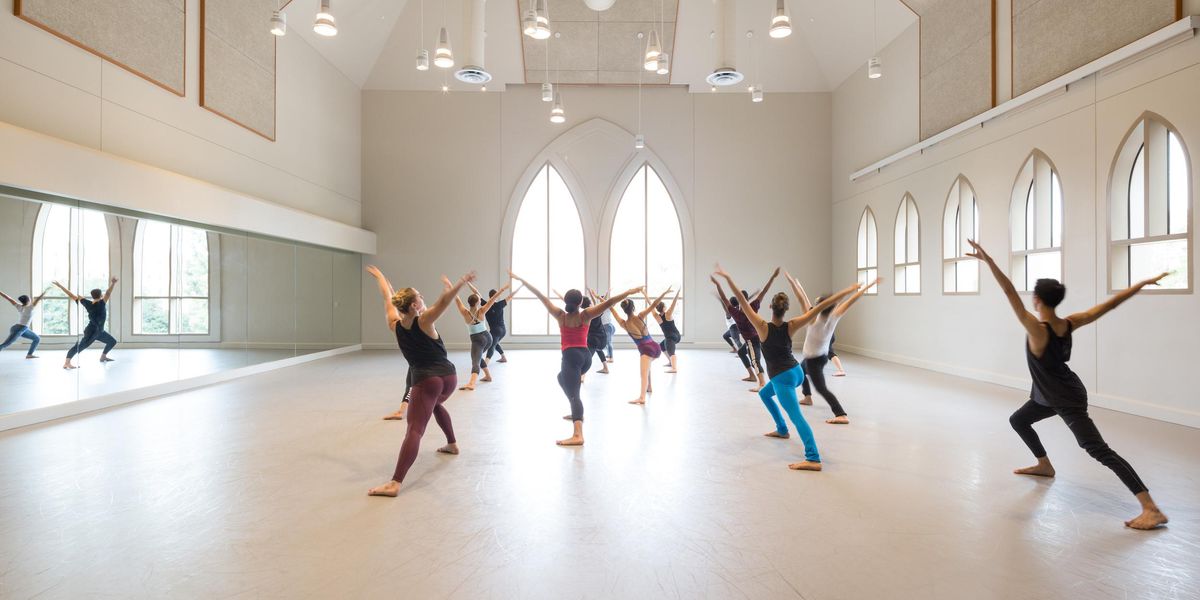Helen Lewis (1916–2009)
Known as Northern Ireland’s “First Lady of Dance,” Helen Lewis died in Belfast in December at 93. A Holocaust survivor, she started the first modern dance company in Northern Ireland and was a beloved teacher to generations of young dancers.
Born Helena Katz in Trutnov, Czechoslovakia, she was influenced by leading figures in European dance, most notably Rudolf Laban and Mary Wigman. In Prague, she studied with Laban’s pupil, MilÄ�a Mayerová, for three years until the outbreak of the Second World War. The training was rigorous and grounded in Laban’s principles of movement. While still a student Helen danced in the school’s professional company, performing at the National Theatre in Prague.
In her celebrated memoir, A Time To Speak, Helen writes of her experiences from 1942 to ’45, when she endured three Nazi concentration camps: Theresienstadt, Auschwitz, and Stutthof. At the last of these, a Nazi commandant learned of her dance background, and she was ordered to choreograph the Waltz from Coppélia for the Christmas show. She lost her mother and first husband to the Nazi genocide. “Dance saved my life,” she often said.
In 1947 Helen settled in Belfast, where she appeared in local productions and choreographed many works in collaboration with the acclaimed Lyric theatre director Sam McCready. According to McCready, Helen “brought a whole European dimension to dance in the theatre.”
In 1956 Helen choreographed Dvorak’s The Golden Spinning Wheel, the first modern dance work in Northern Ireland, for the Belfast Ballet Club. Her own Belfast Modern Dance Group debuted in 1962. She also collaborated with Irish composers Raymond Warren, Havelock Nelson, and Alan Tongue, and with renowned poet Seamus Heaney. Her work ranged from striking simplicity to intricately woven formations.
Working in the dance studio with Helen was always an inspiring experience. She had a deep understanding of movement and explored a wide range of subject matter in her choreography. There was no fixed method. Each new piece began fluidly with the dancers often improvising before she would begin to craft and mold it into a finished work.
Helen spoke to thousands of school children in Northern Ireland about her Holocaust experiences and also to the prisoners in the Maze Internment Camps. She had an amazing gift for bringing people in this troubled part of the world together. Helen will be remembered for her artistic passion and profound humanity.
Helen’s life and work have been the subject of two documentaries, one of them produced by the BBC. She received an MBE in 2001 for her services to dance, and was awarded honorary doctorates from The University of Ulster and Queen’s University, Belfast. Her extraordinary gifts as a teacher are remembered by generations of dancers who continue to teach her work in London, Dublin, Cambridge (UK), Newcastle, San Francisco, and Belfast.
Sam McCready adapted her memoir as a one-woman show for acclaimed actress Joan McCready (his wife), using projections of my choreography as well as a solo by contact improviser Kirstie Simson.
Last year Irish Times called the show “the 2009 Belfast Festival’s most poignant event.” It will be performed at the Krannert Center for the Performing Arts at the University of Illinois at Urbana-Champaign in November 2010.
The recently refurbished Crescent Arts Centre in Belfast, where she taught for many years, will name its new dance studio The Helen Lewis Dance Studio. —Philip Johnston
Philip Johnston, who teaches at University of Illinois, Urbana-Champaign, studied with Helen Lewis in Belfast from 1973 to 78, when “she demanded that I go to London.”
Photo of Helen Lewis ca. 1932, courtesy Philip Johnston.




